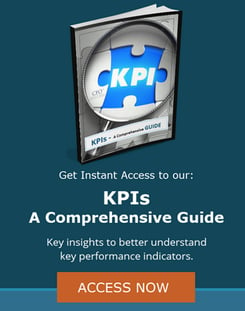 Budgeting and strategic forecasting creates a business roadmap to maintain stability and achieve growth. However, for forecasting to be accurate it needs to be modified when significant changes occur either internally or externally. This is especially important to consider this year, as supply chain disruptions and changing business regulations have drastically changed corporate outlooks across the country.
Budgeting and strategic forecasting creates a business roadmap to maintain stability and achieve growth. However, for forecasting to be accurate it needs to be modified when significant changes occur either internally or externally. This is especially important to consider this year, as supply chain disruptions and changing business regulations have drastically changed corporate outlooks across the country.
If you understand now that there is a high likelihood of needing to undergo reforecasting next year, you will be better equipped to do so when the time comes. Kory Wagner explains, “Expecting your assumptions to last through an entire year is at best naïve and at worst detrimental to your business. Incorporating reforecasting into your regular budget process, as needed, will keep you on track and help you roll with the punches.”
Some companies are reforecasting-averse, so they shorten their budgeting cycles from annual or semi-annual to quarterly or monthly to reduce their chances of needing to do so. But if 2020 has taught us anything it is that every company should be prepared to reforecast as needed because it could become a necessity at any time.
So, this year as you finalize budgets and forecasts, take the approach of “planning to re-plan.”
Understanding Reforecasting
Reforecasting is the process of revising the existing budget holistically after a significant deviation from projected spending or income. The newly created budget will rely on both year-to-date results as well as projections for the remaining year.
Because budget reforecasting is a re-writing of the existing budget in its entirety, instead of just a line-item change, the process can overwhelm companies that are not prepared to reforecast. However, the threat when companies resist reforecasting is that the budget can become obsolete and confidence in the budget can erode, leading to wasteful spending and stymieing growth plans.
When to Reforecast
Compare the budget and year-to-date reports regularly to identify instances when reforecasting needs to occur. Reforecasting should take place when assumptions change or unexpected events occur, for instance:
- Losing an essential business partner
- A warehouse or office fire
- A lawsuit
- Major supply chain disruptions
- A change to state or federal regulations
- Being turned down by an investor that was expected to provide funding
- The loss of a major grant for a non-profit organization
Remember, reforecasting is essential after an unforeseen complication occurs, not an anticipated change. A negative trend like the steadily rising cost of materials likely will not necessitate reforecasting. Your budget should have enough strategic flexibility to be able to absorb predictable changes that would increase expenses or reduce profitability.
Tips for Effective Reforecasting
Reforecasting keeps a company agile and allows management to make quick decisions on everything from staffing to sales and marketing. Follow these reforecasting best practices each time the budget needs to be amended in response to a significant change in the market or competitive landscape:
Gain Buy-In
Effective reforecasting hinges on accurate sales projections and anticipated expense information, which requires input from various areas of the business. Siloed organizations or companies where some departments feel that they “do not have a seat at the table” will be less accurate with their forecasts.
The team at Syntellis explains it well: “A budget should be a living document, shared widely with the people who have the information and can influence the eventual outcome. Certain departments or specialties may have unique funding challenges or opportunities that aren’t reflected in the forecast. Including them in the conversation will provide a fuller picture of the budget.”
Embrace Automation
Online accounting software can reduce busywork and keep better track of historical financial data to improve reforecasting results. Additionally, utilizing automation to pull in year-to-date actual financial information alongside existing budgets also makes it easier to collaborate across teams or locations. If your organization uses a third-party financial services firm, the company should already be using an accounting software to facilitate efficient reforecasting.
Rely on the Data
When reforecasting, use consistent calculations between the original forecast and the new forecast to make an apples-to-apples comparison that is easier for everyone to understand. Document assumptions that serve as the framework for strategic planning in case they need to be amended later.
Remember that reforecasting is not a one-and-done process. After reforecasting, meticulously track the data to determine whether the new forecast is holding up. Understand that additional reforecasts may need to happen to keep the company on track, especially during major industry and market-wide disruptions.
How much certainty do you have in your cash flow forecasting? Learn more about the keys to cash flow forecasting to improve cash flow management.





